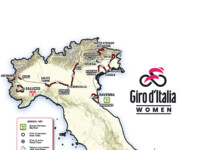By Charles Pekow — One big reason people don’t cycle across cities is the lack of convenience in connecting one cycling route to another. People will only go so far out of their way, ride only so much along heavily trafficked streets or go through so many busy intersections when getting from one bike route to another. And cities are filled with natural and man-made barriers that divide comfortable biking zones, such as rivers, highways, lack of traffic lights along some streets to provide crossings, breaks in street grids and train tracks. People are also discouraged from riding because of steep hills, lack of adequate pavement, fear of crime, etc., but the study didn’t deal with these latter issues.
The Mineta Transportation Institute of the College of Business at San Jose State University in San Jose, CA looked at this issue and how planners can identify barriers connecting routes bikers feel safe and comfortable riding. They did the study in their own back yard, San Jose, CA., a city with a relatively low level of bike riding considering it’s in California. The study focused mainly on commuting to work.
The institute used funding from the U.S. Department of Transportation’s Research & Innovative Technology Administration and the California Department of Transportation. The report, Low-Stress Bicycling and Network Connectivity, found that many local bicyclists can’t answer the question: Do You Know the Way through San Jose? comfortably on a bike. The report refers to “low-stress connectivity” as the problem it deals with.
Researchers labeled connectors in four ways:
-
- those suitable for children,
- those most adults will “tolerate,”
- roads many adult riders will ride on but would prefer a separate bike lane or path and
- those only “strong and fearless” cyclists will tolerate. The institute labeled every street in town.
“Maps in which only bicycle-friendly links are displayed reveal a city divided into islands within which low-stress bicycling is possible, but separated from one another by barriers that can be crossed only by using high-stress links,” the report explains.
Researchers assumed that cyclists would tolerate going up to 25 percent longer than the most direct path without causing undue stress.
The institute tried to look at cycling routes in a reverse way than normal: instead of counting bike facilities or roads cyclists are allowed to ride on, it looked at places cyclists feel too stressed to use for reasons such as danger, noise and breathing auto exhaust. While some riders don’t mind riding in traffic, many others don’t like to or just won’t.
Researches found that while 64 percent of city blocks didn’t overly stress cyclists, these streets lay mainly in residential neighborhoods and the neighborhoods didn’t connect well – planners deliberately designed the city that way to keep motorists out of residential neighborhoods. The city also generally planned well for allowing cyclists to ride within their neighborhoods but not from one neighborhood to another.
A common problem getting around barriers such as highways, rivers and train tracks is that crossings can lie few and far between. Motorists drive at high speeds on ramps going to and from highways, making for stressful bike crossings.
The technical study shows how cities can identify gaps in bicycle connectivity. But it puts on the brakes there. It provides no guidance for planners on how to bridge these gaps, unfortunately.
Read the report at http://transweb.sjsu.edu/PDFs/research/1005-low-stress-bicycling-network-connectivity.pdf.











